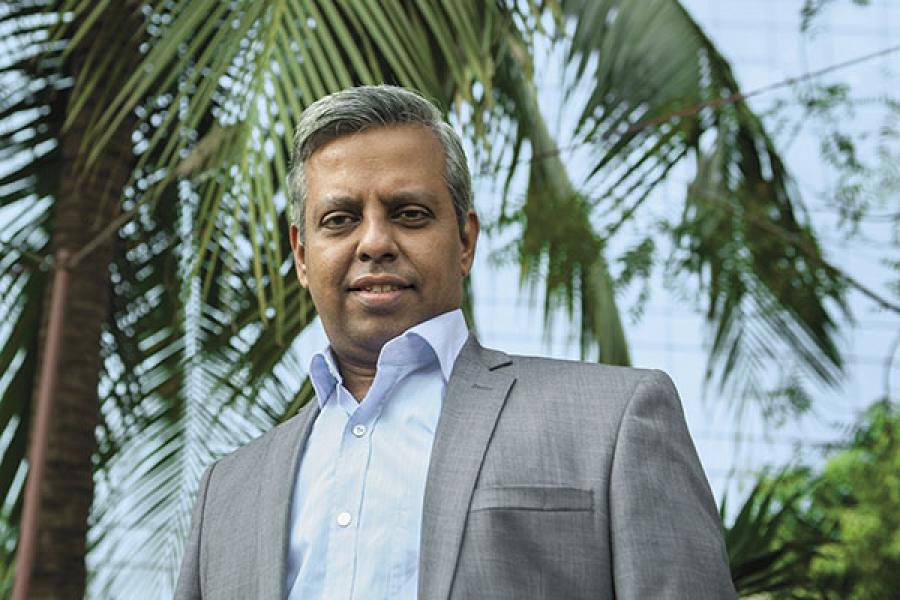
Infina Finance's long and short bets
Kotak-backed Infina Finance has managed to deliver consistent gains since 2009 by betting both on rising and falling stock prices
In June 2015, R Venkat Subramanian, who heads hedge fund Infina Finance, could see no sign of corporate earnings growth picking up. Without that, he knew the market couldn’t keep rising. The problem was that while he had forecast an acceleration, that was at least 15 months away. In the meantime, he had no option but to go short.
Shorting, or betting that the price of a stock will fall, “is what has kept us alive” in this brutal market, says Subramanian, 52. On the day Forbes India met him, the Sensex, the BSE benchmark index, had plunged over 300 points but the fund had managed to keep its head above water.
It is this long-short strategy (where the fund bets on prices rising for a certain set of stocks and hedges against bets for prices falling for a different set of stocks) that has allowed Infina to deliver 16 percent per annum pre-tax returns since 2009. Starting off with about Rs 200 crore in 2009, the fund, which is jointly owned by Kotak Mahindra Bank and the Kotak family, has an asset size that has swelled to Rs 2,000 crore in the last six years.
Infina has done this by shying away from taking long-term bets on the market direction. Instead, like other hedge funds, it makes a series of bets on both the short and the long side. Adding these indicates the net long or short exposure of the fund.
His decision to go short, back in June 2015, was a difficult one, he explains. Reason: “India is a country where the opportunity to go long is far greater than the opportunity to go short.” And most of the time, his fund is net long.
But the Infina CEO had no choice in this situation. While he did not see earnings growth going anywhere till at least the end of calendar year 2015, the market indexes had held up.
As the market has steadily given up its gains in the last six months, Subramanian stands vindicated. He took a contrarian call to go short on Indian financials. Last June, financial companies comprised 30 percent of the Sensex (and they still do). These are heavily owned by foreign investors and domestic mutual funds. The expectation was that prices would keep rising.
Betting on a fall in banking stocks was hardly a trade anyone had stuck his neck out for. Sure, there were doubts on asset quality on the banks’ balance sheets but few predicted a steady fall in stock values. Subramanian went against the prevailing wisdom. “With credit growth not picking up, I saw no reason for bank stocks to perform well,” he says. Today, he’s emerged strong (and smart) and Infina is on track to report a good year of returns for its investors.
On the short side, he looks for companies that have weak balance sheets, an inferior position within the industry and managements that are very conscious of their stock price. If they tick these boxes, it is usually worthwhile going short. “We also pay a lot of attention to management interviews and look for inconsistencies between what the managements said at various points in time. If there is a change in outlook or strategy without an explanation, that triggers a red flag,” he says.
This strategy usually allows Infina to reduce its risk during bouts of exuberance or volatility in the market. For instance, a few days after the Narendra Modi government was sworn in and industrial stocks surged, Subramanian believed the market had priced in a recovery that would take time—and certainly longer than the 12 months the market usually prices in. Their [the industrials’] balance sheets were broken and it would take these companies time to repair them. (A lot of these stocks have halved since May 2014).
The result: Subramanian went short on them. Over the past 12 months, Infina has also made some “obvious shorts” in metals and mining —two sectors that have borne the brunt of the fall in commodity prices.
The fund also has both long and short positions in mid-caps. “Mid-caps are known to outperform both on the upside and the downside,” he says. On the short side, Infina has taken positions in high beta mid-caps while on the long side it follows a buy-and-hold strategy.
One area where Subramanian is unwilling to go against the consensus is consumer stocks. While he acknowledges they’re expensive, he still believes that with their consistent earnings growth, they are not expected to fall out of favour anytime soon. The fund is unlikely to go short on consumer staples but he has gone short on consumer electronics, he says.
Subramanian, whose mandate stipulates that he cannot be more than 40 percent net long (the sum total of his long minus short positions), says he rarely trades against the consensus. “Most of my time is spent in classic hedge fund style, hedging my positions i.e. making sure that the loss or gain from any one position is not too great to take down the fund,” he says.
So unlike mutual funds that focus on beating the indices, Infina focuses on generating a steady return every year, no matter how the market performs.
For instance, a mutual fund manager can explain a 10 percent loss by saying that the Sensex fell 20 percent. “That doesn’t work for a hedge fund like Infina that is expected to make a gain no matter what the market does,” says Subramanian, who every year reinvests his bonus into the fund. “Low volatility and low correlation with the market is our motto.”
(This story appears in the 05 February, 2016 issue of Forbes India. To visit our Archives, click here.)
















